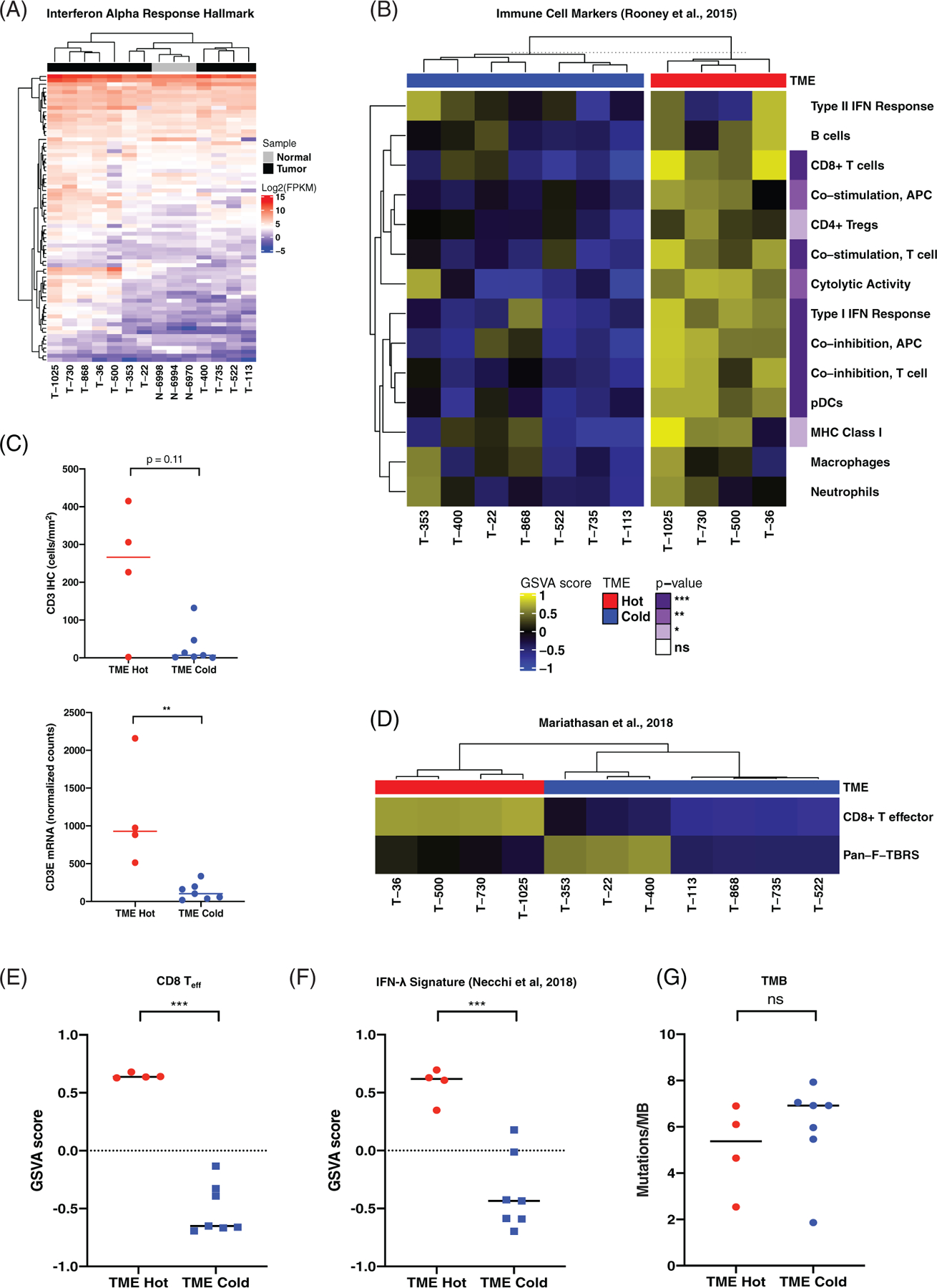FIGURE 4.

Identification of an immunologically hot subset of canine transitional cell carcinoma (cTCC) tumours associated with genomic indicators of response to PD-1/PD-L1 blockade in human bladder cancer. (A) Hierarchical clustering of cTCC tumours and normal bladder based on expression of genes present in the IFN-α Response Hallmark gene set. Colours on the heat map represent log2-FPKM expression values. See Figure S5 for the complete heatmap with gene names. (B) Heatmap of GSVA scores for gene sets representing immune cell types and processes described by Rooney et al. Significantly enriched gene sets were determined using linear models and moderated t tests implemented in the ‘limma’ R package. p values are represented in purple on the right. (C) CD3 immunohistochemical (IHC) (top) and CD3E mRNA expression (bottom) in tumour microenvironment (TME)-Hot versus TME-Cold tumours compared using the Mann Whitney test. (D) Heatmap representing cTCC GSVA scores for CD8 Teff and F-TBRS gene signatures associated with good and bad responses to PD-L1 blockade in human bladder cancer, respectively. (E) CD8 Teff (left) and (F) IFN-λ (right) GSVA scores in HME-Hot versus TME-Cold tumours. Statistical significance was determined same as in panel B. (G) Tumour mutation burden in TME-Hot versus TME-Cold tumours compared using the Mann Whitney test
